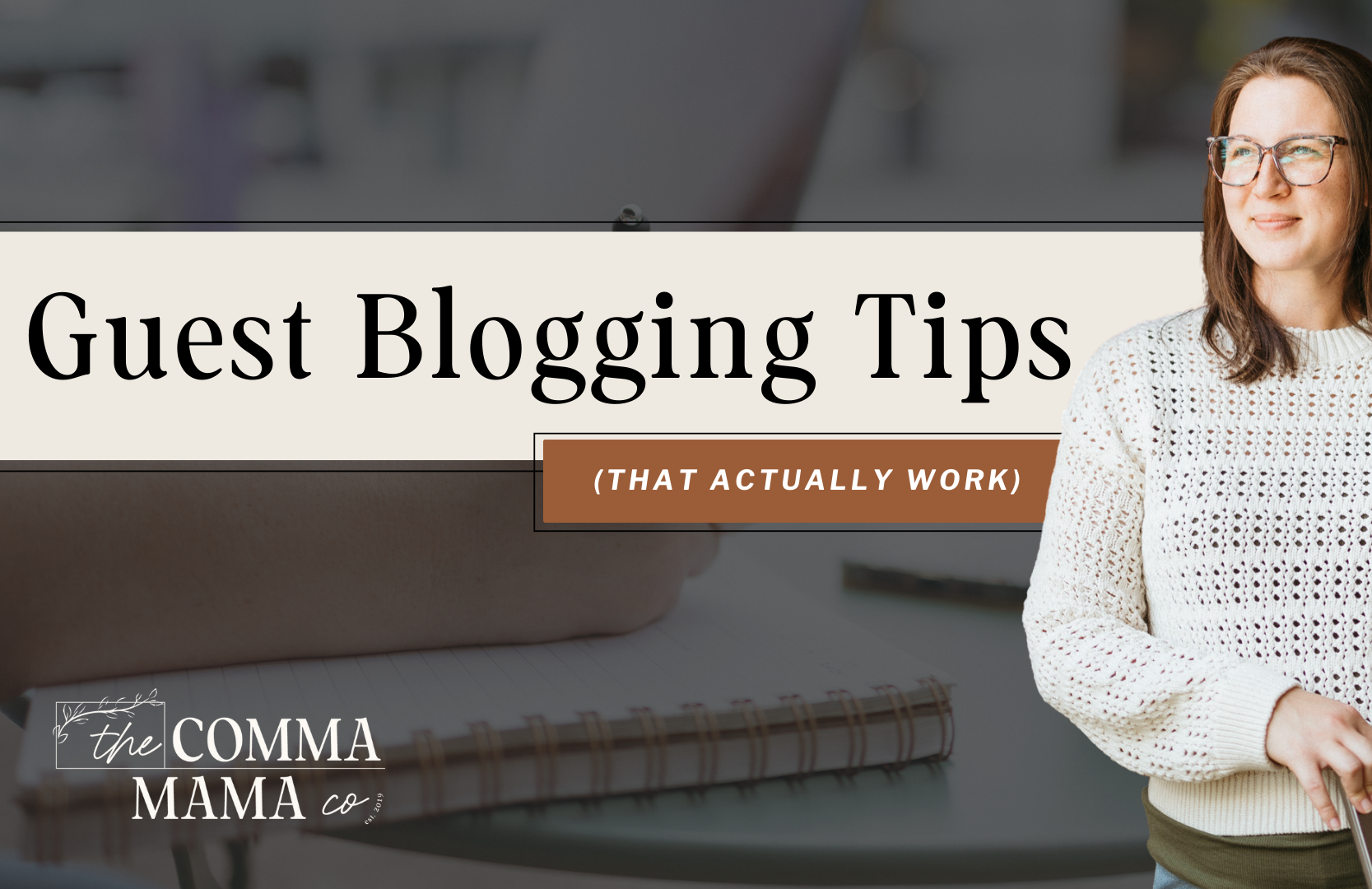I have a love for words and a knack for SEO – and as a mama, I know just how challenging it can be to run a business while raising a family. This blog is just one of the many resources you’ll find here that’ll help you boost your online visibility without sacrificing your sanity.
Thanks for being here (and I hope you’ll stick around).
Mckayla
categories
blogging
seo
Business
Six simple steps to better seo
download now
explore
case studies
to the shop
work with us
follow us on instagram
share
In the world of blogging, it’s a timeless classic — the listicle. A collection of things, names, places, or ideas that have something (truly, anything) in common that are listed in one blog post and published on your website.
Listicles are a favorite type of blog post (particularly for business owners and SEOs) because they can make writing easier — like, by a lot. They don’t usually require the same in-depth explanations or breakdowns as how-to or even review blog posts, but they still give your reader all the things they need (which is exactly what a top-ranking post on Google is meant to do).
But, as with everything in marketing, there’s a lot (and I mean a lot) of outdated advice about putting one together and actually getting results. So, I figured it wouldn’t hurt to share some of my top tips for writing listicles in one of the best ways possible — a listicle.
What is a Listicle?

A listicle is the blog version of a list or a blog written in (at least the majority or purpose of it) list format. Each item in the list includes a little bit more information about the item and could be a short blurb or even a few paragraphs; it just depends.
Since listicles are compiled of multiple different things and ideas, it’s a great way to tie together your other pieces of content and — excuse the quick add of technical SEO — get your content to “talk” and relate to each other through internal backlinking.
Also, a listicle can often, but not always, be used synonymously with a round-up blog post (another one of the many types of blog posts).
Examples of Listicles
Listicles aren’t related to tips and tricks, ideas for inspiration, or favorite things; you can also use them to round up your products. You can list templates you recommend for a certain purpose or timeframe in business, tools for business owners like you, or myth-bust concepts in your industry.
Here are a few common examples of listicles both on business and lifestyle blogs:
- 7 Ways to…
- 13 Tips for…
- 99+ Baby Names for…
- 75+ Email Subject Lines…
- 9 Myths About…
- 42 Types of…
- 17 Examples of…
- 14 Places to…
- 88+ of My Favorite…
- 35 Ideas for…
5 Tips for Writing Listicles (That Don’t Include Adding 99+ of Your Favorite Things)
Now that you’re intimately (okay, maybe only generally) familiar with what a listicle is, let’s talk about how to write one. A listicle is a simple thing that is often overcomplicated by the idea that more is better — whether that’s giving more information, speaking to more people, or giving more details.
A listicle should provide value, but they tend to have two purposes: education and action. And they need to be skimmable (save your text-heavy blog posts for how-tos and guides). Here are some tips that can help you do both:
#1. Pick a Topic Specific to a Purpose, Place, or Idea
I know this sounds pretty obvious, but you have to have a specific purpose, place, or idea to write a listicle — and I mean, very specific. The more generalized you are, the less likely anyone is going to see your blog post.
For example, you’re a die-hard BBQ fan, and you want to share your favorite BBQ places — so you do. But you did it exactly like that, and your blog post is literally “The Top 10 BBQ Places I Know.” The problem is that food is location-based.
So unless you narrow it down to “The Top 10 BBQ Places in California” or “The Top 10 BBQ Places in Phoenix, AZ,” no one is going to get anything but confused (and hangry because they still haven’t gotten their BBQ).
The same applies to your top tips, ideas, strategies, and prompts — if you don’t provide a specific person, reason, industry, or result for your list, the information you provide will not go very far.
#2. Keep it Engaging and Actionable
Kinda building on tip #1, but you want to keep your listicle engaging and actionable — meaning your reader shouldn’t have to “Where’s Waldo?” their next step; it should be pretty obvious.
With listicles, your “action” can be at the beginning of the paragraph/section (the tip or idea you’re sharing that they can use to accomplish the main goal/purpose of the post) or lead up to the final CTA — but never add something just to add it.
Engaging is all about your writing and how you talk to your reader; you should embrace your personality and avoid overcomplicating simple concepts in an attempt to sound “better” or “smarter.” Ann Hadley’s book “Everybody Writes: Your New and Improved Go-To Guide to Creating Ridiculously Good Content” is a great read if you want to learn to become a better blog writer.
#3. Make it an Odd Number (It’s Psychology)
It feels crazy, but there’s a psychology behind it, so always make an odd-numbered listicle (but on the other hand, if you’re giving people steps on how to do something, use an even number).
The number 7 is a favorite, with 11 and 3 as the second and third runners-up. I always say to spice it up, do 7 here, 5 there, a few 3s, and a random 11 or 15 here and there.
#4. Limit Yourself to 3-11 Really Good Points
Yes, there are exceptions — but the goal here is to avoid listicles that go on forever. Let’s be real: who is reading every option (and who has the time to write it? Not me, and probably not you)?
Instead, aim for a smaller number that has more impact and action. For example, if you’re writing a blog post about photography poses, rather than writing “97+ Photography Poses,” write “11 Boudoir Photography Poses” or “7 Funny Poses to Use as a Family Photographer.”
They’ll get what they need quicker (and have a better user experience), which improves your SEO and builds a better relationship with your reader, establishing you as the expert (yay).
#5. Give Context (This is Your Make-or-Break)
CONTEXT IS KEY. Truly, context is key to making sure your reader enjoys your listicle and getting it ranked on Google.
You can add context to your listicle by adding more specifics in your header (like in the example from tip #4) and doing more than just bullet-pointing your list points. The only exceptions are baby names or blog posts that give a lot of context outside of the list (very rare, but it does happen, like in this post I wrote for Reveal Studios about email subject lines).
But even then, baby names typically at least provide the meaning behind the name, which does actually count as adding context so I’m not sure if that’s truly an exception.
Imagine if I’d just listed out these tips! Yes, it’d make sense, but would you be 110% confident in applying these tips to your next blog post? Maybe not… And that’s what you want to prevent. TL;DR: Add context.
Why You Should Write Listicles (or Not)
Listicles are just one type of blog post you can choose to write, which means that if you don’t want to add them to your content calendar, you don’t have to.
Most listicles aren’t inherently selling or hard pitching your services; they’re soft sells (linking your products and offers in your text) and encouraging your readers to take the next step, like joining your community or subscribing to your newsletter.
You can sell, but it should be very aligned (more aligned than anything else in your entire offer suite).
This is mainly because listicles — at least the ones published with the goal of ranking on Google or getting more visibility — attract a lot of new traffic and audience members who aren’t actually ready to buy.
Rather than reading and ditching your website, give them an option to learn more about you (and stay in your space). So, before you go, if you’d like to stay in touch and learn a bit more about writing better blog posts, download my free 14-step checklist.
Reader Etiquette
© - Content and images in this blog are copyright this blog unless stated otherwise. Feel free to repost or share images for non-commercial purpose, but please make sure to link back to this website and its original post.
℗ - We do not store any information about your visit to our website other than for analytics and optimization for content and reading experience through the use of cookies.
c/o - Our site does at times contain paid advertisements, sponsored content, and/or affiliate links.
You might want to check these out too while you're at it
FREE Guide:
6 Simple Steps For Better SEO
INSTANTLY IMPROVE YOUR GOOGLE RANKING
Want to improve your website SEO in one afternoon? This free resource offers 6 actionable steps you can take in 15 minutes or less to instantly improve your SEO.
download now
categories
blogging
SEO
business
It's me, hi! Your SEO bestie.
get to know me
work with us
//
services
//
case studies
//
Mom of three, lover of all things blogging, and borderline obsessive coffee drinker — I also just happen to love making complicated things simple and accessible, especially when it comes to SEO. The blog is a collection of what I've learned from years of testing, trial and error, and working with amazing clients with impactful businesses (just like yours). Blogging and SEO doesn't have to be boring — and it definitely doesn't need to be difficult.



